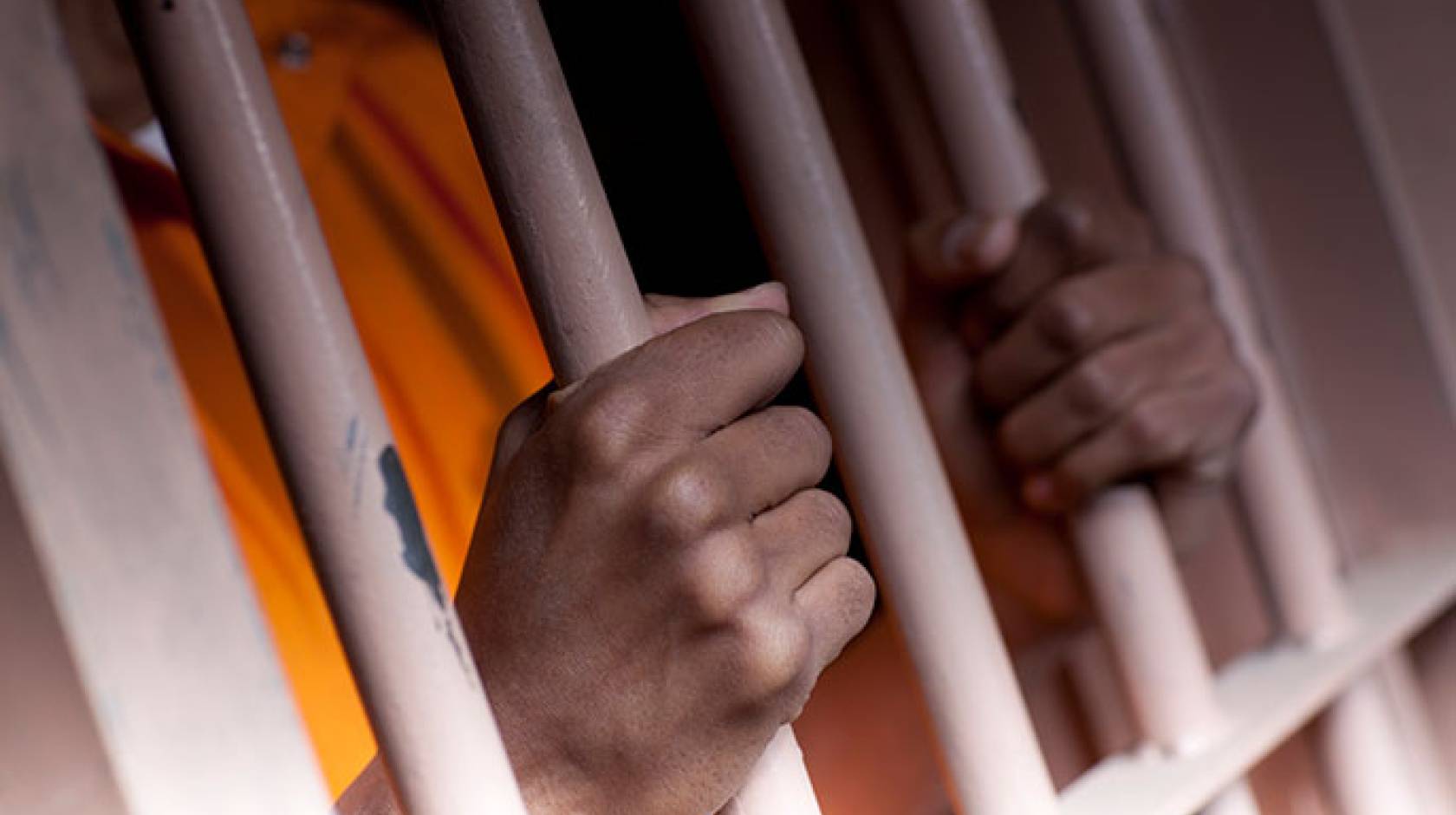Lisa Fung, UCLA

Michael Stoll didn’t set out to become an expert on prison sentencing.
When he entered academia more than two decades ago, Stoll focused on the challenges that low-skilled workers face in the labor market. But about 10 years ago, his research focus shifted. “In some of the seminars I would give across the country, I was always getting this question: ‘Why do so many men have prison records?’ That was the elephant in the room.”
So Stoll, a professor of public policy and urban planning at the UCLA Luskin School of Public Affairs, joined Steven Raphael, a professor of public policy at UC Berkeley, and they threw a net over the elephant and began to ask questions that led to several books, beginning with “Do Prisons Make Us Safer?” in 2009, and more recently, “Why Are So Many Americans in Prison?” in 2013.
Stoll and Raphael found that the prison population had increased dramatically. In the ’70s, most industrialized countries incarcerated about 100 people per 100,000, or about 0.01 percent of the general population. In the United States, that was true until the 1980s, but by 2007 the percentage had quintupled.
Their findings suggested that the surge was almost entirely attributable to changes in policy, which included reclassifying some offenses and increasing the severity of sentencing. “Americans — either through elected officials or referendums or other mechanisms — got tougher on crime,” Stoll said. Theories about why centered on incentives from the federal government that promised more resources for police and for building prisons if states adopted truth-in-sentencing laws, which required that people convicted of crimes serve 80 percent of their sentences. “We do know that people ran on platforms to get tough on crime,” Stoll said. “If you’re the opposition candidate, then the way you equalize them is by saying that you’re equally as tough. You can’t say you’re softer.”
As incarceration surged, Stoll said, “There was a big debate going on about whether prisons work in reducing crime.” Indeed, he said, “Crime rates since the 1990s have declined rather dramatically.” Violent crime, for example, fell about 46 percent nationwide, from 713.6 to 386.9 per 100,000 between 1994 and 2012, their research found. “Most people say the reason that crime is dropping is because you locked everybody up,” Stoll said. But their research found that the get-tough laws were not causing the drop in crime.
Changing demographics
While increased incarceration accounted for about 10 percent of the decline, changing demographics played a big role. “We’re getting older, we’re getting more foreign-born. Older people and foreign-born people are less likely to engage in crime,” Stoll said. In addition, school attendance was up, and high school graduation rates had climbed. “We know there is a relationship between being in school and crime.”
Moreover, Stoll and Raphael found that as prison populations grew, benefits decreased. The financial impact of high incarceration rates was significant. The annual cost of housing an inmate ranged from the low $40,000s to upwards of $60,000 at high-security prisons. Costs at the jail level, although varied, were significantly lower. In California, Stoll said, the cost of jailing offenders instead of imprisoning them was as much as 60 percent to 70 percent lower. Today about 2.2 million people are being held in state prisons, federal prisons or local jails across the country, according to the U.S. Bureau of Justice. Notably, Stoll said, incarceration rates are disproportionate for African Americans and Hispanics, which account for 20 percent and 25 percent of the prison population, but only 11 percent and 13 percent of society.
Thinking 'smarter' about incarceration
Funding associated with prisons accounts for 5 percent to 15 percent of state budgets, and, in some places, as much as 20 percent. According to the California Department of Corrections and Rehabilitation, nearly $9 billion was allocated to the agency for fiscal year 2013-14. “These are huge budgetary categories that take up a lot of the General Fund,” Stoll said. “When [state] budgets shrank, people had to think creatively. That was when people started to think about how you do this differently. … There was movement on thinking smart.”
Stoll and Raphael concluded that “getting smarter” meant changing sentencing and parole practices, abandoning mandatory minimum sentences and creating incentives to redefine the use of state prison systems. Such policy changes, Stoll said, will result not only in cost savings but also in reduced crime rates. “Our idea of the diminishing margin of returns to incarceration as a crime-fighting strategy starts with the idea that if we use prison right, if you target the most violent in society and the most criminally prone, that is where you get the most effectiveness in reducing crime.”
Today, changes are already taking place.
New legislation
In 2011, California Gov. Jerry Brown signed into law AB 109, which targeted prison overcrowding by letting judges send low-level, nonviolent, non-sex-crime felony offenders to local jails instead of state prisons. It also allowed violators to split their sentences between time spent behind bars and time under supervised release. In 2012, Californians voted overwhelmingly to change the state’s Three Strikes law by limiting the ability of prosecutors to seek 25-year to life sentences for lawbreakers if their latest offense was not a serious or violent crime. Statistics compiled at Stanford Law School show that prisoners released since the revision have a low rate of recidivism.
Last year, California voters approved Proposition 47, a ballot initiative that reduced the classification of several criminal offenses from felonies to misdemeanors, among them drug possession, forgery and some other nonviolent crimes. That made more offenders eligible for sentencing to less costly local jails. It also allowed these offenders to seek reduced sentences and possibly release. Savings from these changes were earmarked for mental health and substance abuse treatment, truancy prevention and victim services, and are expected to be realized next year.
“We just went through a period in some big states that had been big incarcerators — California, Florida to some extent, Texas a few years ago — where they just got softer on crime,” Stoll said. “And even conservatives, who are usually the get-tough-on-crime people, have been fairly strong, vocal proponents on getting smarter on crime. So we’re in this unique period.”
There are still concerns. Some law enforcement officials, for example, worry that fewer felony convictions for drug crimes will mean that many offenders will no longer be required to attend rehabilitation programs — and that funding for those programs, determined by enrollment, will drop.
Stoll acknowledges the concern. “Because we don’t have the savings yet and programs for re-entry in place, we can’t ensure that those convicts get the right services so they can minimize their recidivism,” he said. “Once we see the savings, the idea is that we can start putting in diversion support programs at the local level.”
A work in progress
All sides agree the goal is making communities safer, with the understanding that change will take time.
“It’s a work in progress,” Stoll said, “but policy change and adoption is taking place. It’s not a seamless transition. There’s uncertainty. But it costs substantially less for jails than for prisons.”
This has been condensed from a story running in the inaugural issue of UCLA Blueprint. Read the complete story here.

